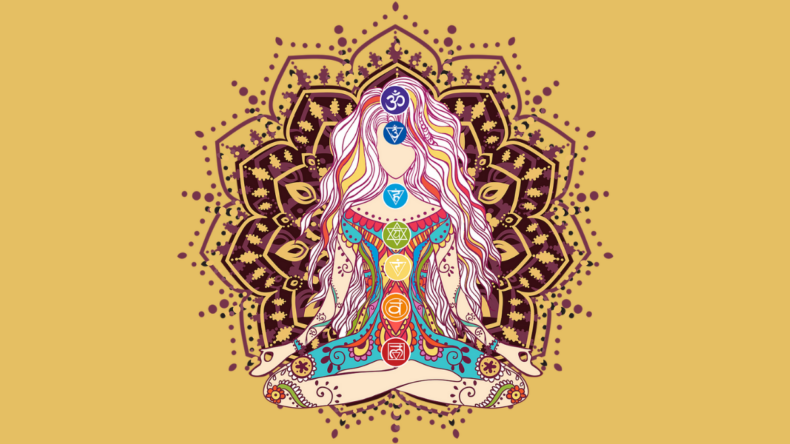Harmony is usually a human value, referring to compatibility and accord in feelings, actions, relationships, opinions, interests, etc. It denotes a state of balance among forces influencing and even opposing one another.
To be in harmony means to deal with disputes and resolve conflicts fairly and adequately with neutralization.
Harmony is the highest form of wisdom a human being can possess. To attain harmony with ourselves, we need to understand ourselves first. We need to understand and analyze the activities we perform every second to better comprehend the actual harmony with ourselves.
Harmony in self relates to the actions of self.
One needs to understand the abstract things existing inside a human body. The three significant forces of mind are desire, thought and expectation. We constantly have these three types of emotions running inside our minds.
It is a commonplace for people generally to think of the human body as being merely an elaborate machine with all the non-material aspects of the human being thinking, feeling, attitudes, emotions, mores, Imagination, etc., as being simply the result of the physiochemical activities, which take place in the physical body.
However, the human organism is not a machine and does not operate under the aegis of chemical and biological laws. These emotions are included in the activities of self. These forces drive us to live like human beings.
So, how to bring harmony within oneself could lie something like; In nature, as in life, we look to find a balance, a sense of connection. Many beliefs embrace this feeling of peace, the essential yin and yang of all beings.
For us, harmony means a coming together of two or more souls, opinions, thoughts or feelings to blend, to become more together than we can be alone, to be connected as a whole. It also means gathering together in peace and friendship.
All of us so that together in peace and friendship. All of us here at harmony invites you and me to seek that balance with us so that we can embrace all that life has to offer together.

Desire, Thoughts and Expectation –
Desire is the ultimate emotion that relates to the sense of belonging or hoping for a person, object, or outcome.
Suppose a person has a desire for something, the image of that thing in the mind. A desire is a virtualized form of what to do and what to be in real life. Thought is an idea or an opinion produced by thinking or occurring suddenly in mind.
The activity of analyzing in mind has been considered. A thought is a virtualized form of how to do and how to be in the real world.
The expectation is a strong belief that something will happen or be the case. An expectation is an activity of selecting the desired things from the outside world.
Imagination:
In totality, Desire, Thought and Expectation is called Imagination. The most powerful thing which differentiates a human being from an animal is the ability to imagine.
Imagination is continuous in every human being’s mind. We constantly imagine something in our minds, and it follows our nature to imagine all the time. Creativity connects us with self as well as the outside world. This relates to our behaviour and work.
We take many decisions in our Imagination, and out of them, some are executed. Everything we imagine will not get completed.
Attainment of Harmony:
Suppose Imagination is in accordance (or inline) with natural acceptance, and there is no contradiction within Imagination or no contradiction with genuine acceptance.
In that case, it will lead us to harmony or happiness. Honest acceptance implies unconditional and total acceptance of the self, people and the environment, and it also refers to the absence of any exception from others.
Once we fully and truly commit ourselves to the basics of natural acceptance, we feel a holistic sense of inner harmony, tranquillity and fulfilment. Otherwise, it will lead us to disharmony and unhappiness.
Sources of Desire:
Typically, Imagination is random and contrary to each other and maybe unorthodox to natural acceptance.
This can be confirmed by various statistical charts produced by top-level organizations related to different types of weaknesses and failures in global societies. The happiness level index of various countries speaks volumes about a commoner’s desires and Imagination.
The three primary sources of passion are Preconditioning, Sensation and Natural Acceptance.
Preconditioning is assuming without knowing, and it depends upon something or someone outside. It keeps changing, and it is not sure whether it will lead us to harmony or happiness.
The sensation is the happiness attained from favourable sight, sound, taste, smell, etc. From all these sources, desires occur inside every human being.
There may be contradictions between desire and thought, thought and expectation, desire and expectation, or natural acceptance, leading us to disharmony or unhappiness.
Natural Acceptance:
The first step towards building harmony in self is aligning our imagining following natural acceptance. Genuine acceptance demands some purpose of desire, and there should be some purpose behind any desire existing inside a human being.
If there is a vital purpose behind a passion, then, in this case, Imagination is guided by natural acceptance, leading to coexistence, harmony and relationship.
The balance will eventually lead us to mutual happiness, mutual prosperity and fulfilment of human goals. This is the basic structure of the Universal Human Order.
Reality Check:
We have observed that the maximum amount of desires come from preconditioning and sensation. Very few wishes come out from natural acceptance, which can be increased through self-exploration.
Various surveys, statistical charts, and local report indexes prepared by top-level governmental and non-governmental organizations prove such scenarios. To attain harmony with self, our desires should mainly come from natural acceptance.
Conclusive, we should learn how to minimize the effect we believe in caused due to preconditioning and sensations by aligning our desires not by any substantial outbound happiness but with natural acceptance through the practices of self-exploration, meditation, and strong awareness.













